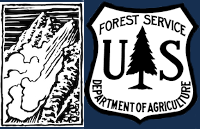Snowpack and Avalanche Discussion
<p><span><span><span><span><span><span>Near Bozeman, Big Sky and Cooke City, 9-15” of snow (0.7-1.3” snow water equivalent) fell since Friday and creates the main avalanche problems today. Near Island Park has received 2-3” with heavy snow possible today which will form similar hazards.</span></span></span></span></span></span></p>
<p><span><span><span><span><span><span>This morning the wind increased out of the southwest and is drifting new snow into thicker slabs which makes </span></span></span></span></span></span><span><span><span><strong><span><span>wind slab avalanches</span></span></strong></span></span></span><span><span><span><span><span><span> possible for people to trigger. Yesterday the wind was calm and the snow was mostly unaffected (</span></span></span></span></span></span><a href="https://www.youtube.com/watch?v=o6qkMwPpVeg&list=PLXu5151nmAvToI_ir… from Mt. Blackmore</span></span></u></span></strong></span></span></span></a><span><span><span><span><span><span>), so today there is plenty of snow to grow large, fresh slabs which might be easy to trigger. </span></span></span></span></span></span></p>
<p><span><span><span><span><span><span>Additionally, </span></span></span></span></span></span><span><span><span><strong><span><span>dry loose or wet loose avalanches</span></span></strong></span></span></span><span><span><span><span><span><span> can slide easily on firm melt-freeze crusts buried below the new snow. Any sunshine or above freezing temperatures will quickly make the new snow wet and more cohesive, and increase the chances of larger loose snow slides or </span></span></span></span></span></span><span><span><span><strong><span><span>storm slab avalanches</span></span></strong></span></span></span><span><span><span><span><span><span> on non-wind-loaded slopes. </span></span></span></span></span></span></p>
<p><span><span><span><span><span><span>Yesterday skiers in the Bridger Range triggered small wind slabs (</span></span></span></span></span></span><a href="https://www.mtavalanche.com/node/34793"><span><span><span><strong><span…;) and loose snow avalanches (</span></span></span></span></span></span><a href="https://www.mtavalanche.com/node/34797"><span><span><span><strong><span…;, </span></span></span></span></span></span><a href="https://www.mtavalanche.com/images/25/sluff-debris-pile"><span><span><s…;).</span></span></span></span></span></span></p>
<p><span><span><span><span><span><span>Assess the stability of the new snow as you travel and watch for changing conditions throughout the day. Be cautious of steep slopes with fresh drifts or a moist snow surface. Cracking across the snow surface is a sign fresh drifts are unstable, and roller-balls or pinwheels indicate a moist snow surface and increasing potential for wet loose slides. Avalanches might not be huge, but even small slides can be harmful if they knock you over a cliff or drag you into trees or rocks. Before riding steep slopes consider the consequences of being caught in any size slide.</span></span></span></span></span></span></p>
<p><span><span><span><span><span><span>Avalanche danger is MODERATE near Bozeman, Big Sky, Cooke City and Island Park.</span></span></span></span></span></span></p>
<p><span><span><span><span><span><span>Near West Yellowstone, 1-3” of snow fell since Friday with a few inches possible today. Small </span></span></span></span></span></span><span><span><span><strong><span><span>wind slab avalanches</span></span></strong></span></span></span><span><span><span><span><span><span> can be triggered where the new snow is drifted into fresh slabs today. Watch for snow blowing across ridgelines, or cracking across the snow surface as signs that fresh drifts exist. Small </span></span></span></span></span></span><span><span><span><strong><span><span>wet loose avalanches</span></span></strong></span></span></span><span><span><span><span><span><span> are also possible if the new snow warms up and gets wet. These problems are mainly only an issue where a small slide knocking you off your feet would have high consequences, such as above cliffs or on long, steep slopes.</span></span></span></span></span></span></p>
<p><span><span><span><span><span><span>Aside from small instabilities involving the new snow, the snowpack is generally stable, and large avalanches are unlikely. The avalanche danger is LOW near West Yellowstone.</span></span></span></span></span></span></p>
Hyalite Road Closure
Starting tonight Hyalite road will be closed to ALL MOTORIZED VEHICLES until the morning of May 16. This is a regular annual road closure to reduce road damage during the spring thaw. Bicycle and foot traffic are allowed. Contact the Bozeman FS Ranger District for more info.
